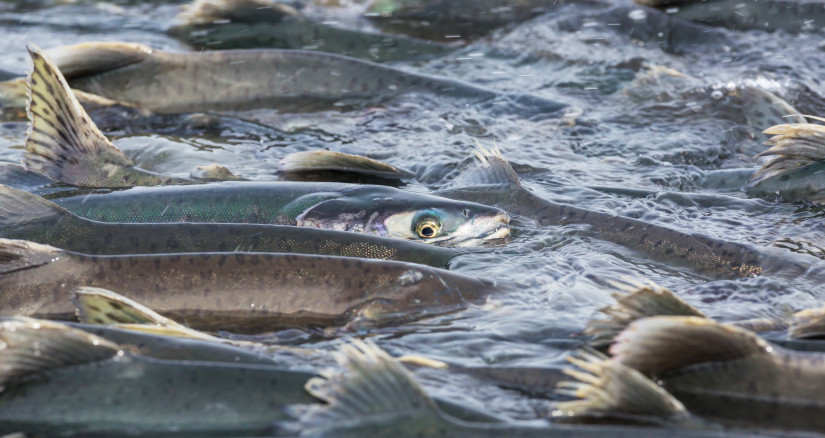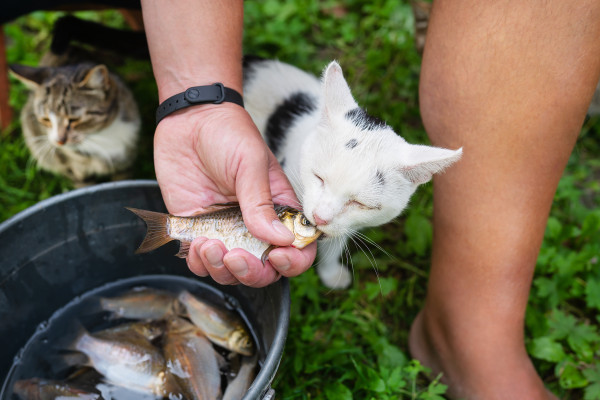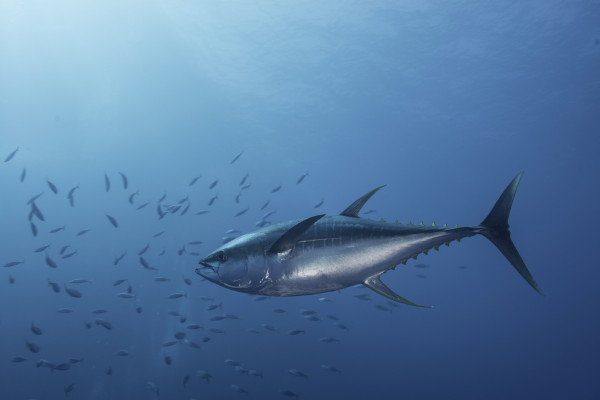
Swimming in Trouble: A Fishy Case of High Vitamin D Levels
In 2018, a pet food brand came dangerously close to issuing a recall for excessive vitamin D levels in their canned dog food. The culprit? Fish—specifically, salmon and whitefish. What started as a potential quality crisis quickly became a full-blown, cross-functional root cause investigation. This involved ingredient suppliers, new testing protocols, manufacturing Standard Operating Procedures (SOPs), creative tool creation, and a lot of discussion and collaboration.
With high stakes and a limited testing budget, my team had to think like scientists, act like detectives, and collaborate like diplomats. This article explores how we turned a regulatory tripwire into a process improvement opportunity, and built a simple yet effective high-fish content formula management system that was adopted across several other teams.
When Regulations Shift the Tide
The pet food industry swims in a sea of complexity: regulatory standards, fluctuating ingredient quality, and sourcing variability are all part of the current. In 2016, the Association of American Feed Control Officials (AAFCO)—the body that sets nutritional standards for animal feed in the U.S.—adjusted the maximum allowable vitamin D levels in pet food.
- For dogs, the safe upper limit (maximum) decreased from 5,000 IU/kg to 3,000 IU/kg on a 100% dry matter basis (DM)
- For cats, the safe upper limit (maximum) increased from 10,000 IU/kg to 30,000 IU/kg DM.
While cat food formulations gained flexibility, dog food formulas were suddenly put on a tighter leash.
Fast-forward to 2018—a well-known pet food brand, recognized for its high-meat-content canned recipes, nearly triggered a recall when challenged by external authorities with excessive vitamin D levels in several fish-based dog products. Did panic ensue? Not quite. But stress levels certainly went off the charts.
The Triggering Event
Random shelf testing from a government authority flagged multiple canned dog food products that surpassed the current recommended maximum for vitamin D set by AAFCO. Alarm bells rang—too much vitamin D in pet food isn’t just a paperwork issue. It can lead to toxicity in dogs, including kidney failure, calcification of soft tissues, and in extreme cases, death.
The common thread? Fish-based recipes. Rather than sit around waiting for a recall to swim our way, my cross-functional team and I dove into a full-scale root cause analysis.

Photo by Art-Family
Fish on the Line
At the heart of the issue were five fish species used across several recipes: salmon, whitefish, tuna, mackerel, and sardines. Our initial hypothesis was not that all fish were guilty. Testing began, funded not by the brand (who initially refused) but by the manufacturing partner—a brave move, considering each vitamin D test cost around $400 and took 10 days to process.
The results were illuminating:
- Tuna, sardines, and mackerel had low vitamin D levels varying from 200 to about 2,000 IU/kg DM, right in line with published literature.
- Whitefish and salmon were the outliers in terms of variability. Some lot numbers had vitamin D levels that were through the roof., but it wasn’t consistent throughout the pallet or truckload.
- Variabilities between lot numbers and samples made the situation quite overwhelming. For the same species, origin and ingredient supplier, some samples came back at 2,000 IU/kg DM, while others went as high as 60,000 IU/kg DM.
That discovery wasn’t exactly welcoming news. Whitefish and salmon were the stars of several high-fish formulas, some touting 95% animal product content. The higher the inclusion of these two fish species, the higher the risk of high vitamin D levels, and the greater the risk and potential for trouble.
Digging Deeper: Where Did It All Go Wrong?
Not all salmon or whitefish were created equal. So, our team zoomed in on potential hypotheses. Were wild-caught fish more problematic than farmed fish? Did fish that included heads carry more vitamin D than those that didn’t? Could different processing techniques impact vitamin D levels?
We tested all these hypotheses. (Spoiler: The results were murky.) The assumption that farmed salmon would be higher in vitamin D was not consistently true. The idea that excluding fish heads would lower vitamin D levels was debatable. And the hope that processing techniques could help was not as impactful, since removing certain parts of the fish does not have a direct and consistent impact on vitamin D content.
At this point, we had spent nearly $20,000 on testing. It became clear that vitamin D levels in fish were highly variable and unpredictable, likely influenced by factors like diet, location, and seasonality.
Upstream Blind Spots
The next hurdle was ingredient sourcing. Many fish suppliers sell by-products from the human food production to pet food companies. Due to this, suppliers don’t routinely test for AAFCO-specific recommended nutrients, such as vitamin D. Additionally, there is little interest in spending additional dollars (upwards of hundreds of dollars per load) on nutrient testing. Lastly, there can be a lack of transparency and traceability in the fish supply chain.
Trying to get a supplier to test a frozen truckload of salmon? That’s like asking a tuna to climb a tree. This lack of upstream visibility meant manufacturers had to shoulder the burden of ingredient testing—even though they weren’t creating the raw problem.

Photo by imagesourcecurated
Developing A Solution
If you can’t change the source of the issue, you control the process.
My team and I developed a multi-pronged strategy rooted in cross-functional collaboration and data-driven tools. We began by establishing a clear SOP for sampling vitamin D in incoming fish shipments, keeping in mind variability from pallet to pallet and even within the same pallet. The goal was to capture both average and worst-case vitamin D concentrations. Parallel to this, we convened quality assurance (QA), research and development (R&D), procurement, and production to align on a regulatory buffer—creating a shared understanding of how to account for test variability, ingredient inconsistency, and measurement error.
To operationalize this strategy, we built a dynamic vitamin D tracker spreadsheet in Excel, enabling the production and QA teams to input proximate analysis and vitamin D data for each lot. The tool then flagged which fish lots were suitable for specific formulas and highlighted when a lot pushed a product close to the regulatory limit—at which point R&D would step in for final approval. For high-risk, fish-rich formulations, we implemented a lot-level approval process, effectively creating a semi-automated risk management system.
It wasn’t fancy. But it was effective. And it worked.
From Crisis to Control
This system gave our team peace of mind and precision. No more vitamin D surprises. No more late-night panic over untested fish. Even better? This proactive approach helped avoid costly recalls, improve collaboration across departments, establish better supplier expectations, and protect the brand’s reputation in the long run.
Plus, the process itself became a blueprint for nutrient risk management, which could easily be adapted for other nutrients with tight regulations in companion animal nutrition (like selenium or copper).
Through this process, here’s what we learned:
- Fish ingredients can be wild cards, even when farmed. Ingredient consistency in pet food isn’t just about specs—it’s about testing, too. Don’t just rely on a Certificate of Analysis (CoA) or Letter of Guarantee (LoG)
- Brands with premium claims, such as 95% fish, could benefit by frequent testing to mitigate the risk of noncompliance and potential recalls. Cross-functional teams are goldfish turned sharks—when you bring QA, R&D, purchasing, and production together around a shared pain point, you get smart, scalable solutions.
- Spreadsheets save lives (or at least, reputations).
Ingredient variability can make or break a pet food brand’s ability to meet regulatory compliance—especially when working with volatile ingredients like fish. Vitamin D, while essential, poses a hidden risk in fish-heavy formulas, particularly in canned dog food. These risks are exacerbated by the fact that suppliers often don’t test for pet-specific nutrient levels, making it critical for manufacturers to build internal safeguards rather than waiting for upstream fixes.
Strong SOPs and testing protocols are vital—but they’re only effective if developed and enforced by cross-functional teams that understand both the science and the stakes. By implementing smarter, more targeted testing strategies, companies can reduce costs without compromising safety. Ultimately, planning is not just good practice—it’s essential to protecting pets, reputations, and the bottom line.
If your brand still sells dog food and treats formulas with high fish inclusion (over 50%), consider sending some finished product for vitamin D testing if you haven’t done so for a while. As one of my favorite quotes highlights: “Failing to plan is planning to fail!”
Of All The Fish in the Sea
The experts at BSM Partners have seen—and successfully addressed—problems like these across the pet food industry many times before. Our seasoned team stands ready to support brands that want to build smarter, science-backed systems for ingredient risk management. Whether you're navigating a current crisis or proactively tightening your quality controls, BSM Partners can help you chart a safer course—no lifeboat required.
Follow us on LinkedIn for the latest updates on all things happening here at BSM Partners.
About the Author
Émilie Mesnier's passion for pets ignited during a 2007 internship in palatability research and has propelled her ever since. A French-trained food scientist, she now blends two decades of global know-how—nutrition, marketing, sustainability, animal welfare and international growth—into one goal: better foods and lives for animals. A lifelong learner who has absorbed insights from 80-plus business books on strategy and continuous improvement, Émilie turns ideas into action every day. After 16 years in the US and running a small farm animal rescue sanctuary in Utah, Emilie moved children, husband and two senior pets back to France in early 2025 to bring BSM Partners’ full suite of consulting services closer to clients across the European market.
This content is the property of BSM Partners. Reproduction or retransmission or repurposing of any portion of this content is expressly prohibited without the approval of BSM Partners and is governed by the terms and conditions explained here.